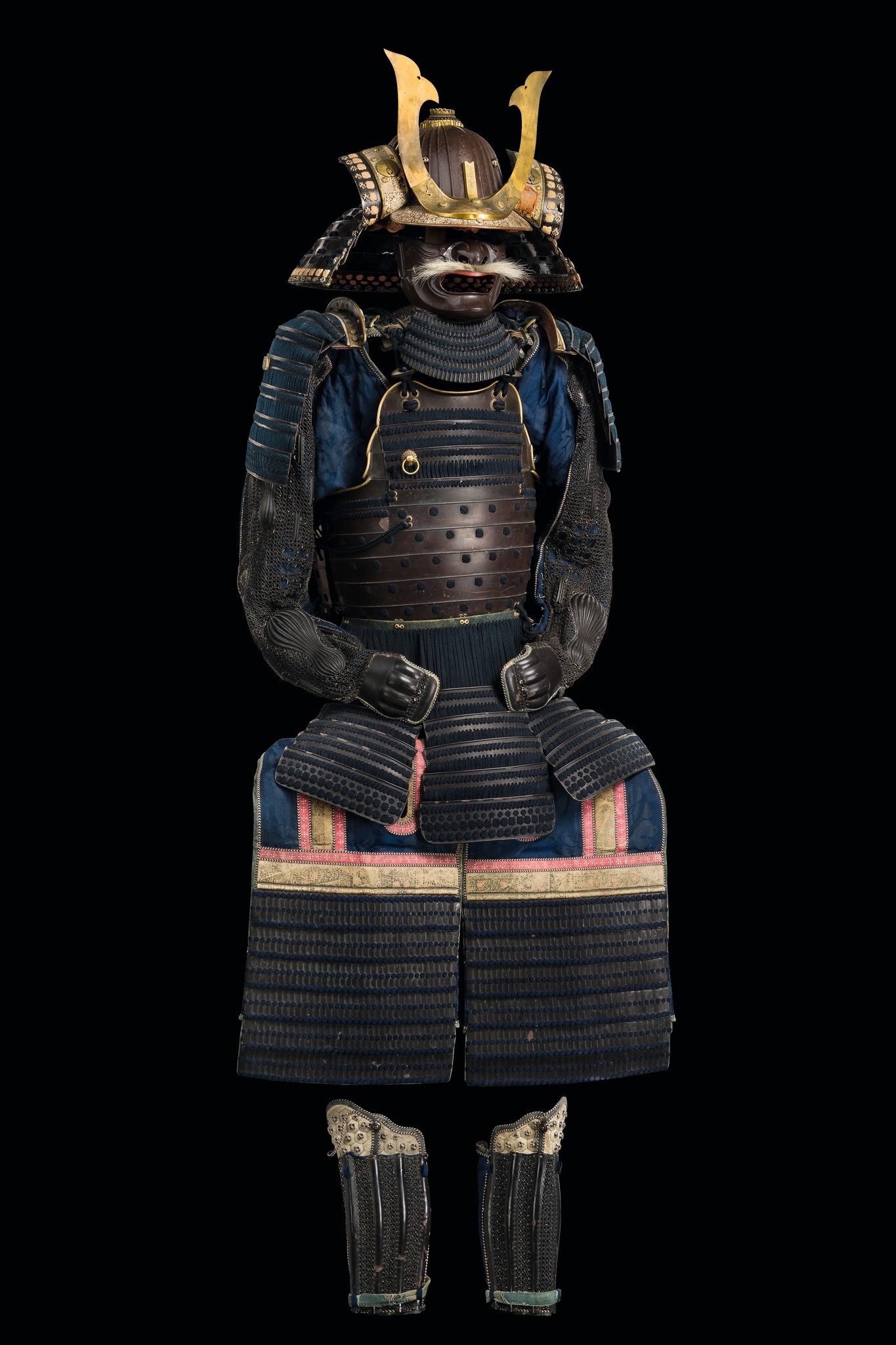Samurai armour, Edo period · Japan · ID: 3039589
Description
consisting of 15 parts, helmet “kabuto” made from 36 steel slats, covered with dark red/brown lacquer, with forehead plate “mabisashi” and five-parted neck guard “shikoro”, helmet ornament “kuwagata maedate” (stag-beetle) from brass, small opening in the top “hachimanza” (=seat of the war god, “hachiman”), thought for passing the warrior’s top knot through, with ring-shaped floral metal ornament “kashiradate”; faceplate “ressei menpo” (“annoyed expression”) with beard and removable nose protection; chest armour “do” made of iron with a coating of dark red/brown lacquer, special fitting and metal ring on backside for attachment of a small banner “sashimono” with the crest of the feudal lords “mon” or troop identification; bipartite thigh guards “haidate”, seven-parted hip-protection “kusazuri” and shoulder plates “sode”, each made from iron lamellas covered with dark red/brown lacquer and held together by bands of blue fabric; sleeves from midnight blue silk, covered by netting of tiny metal rings, gauntlets “tekko” with metal protection for the back of the hand; two shin guards “suneate” from lacquered iron lamellas alternating with ring-shaped metal netting, on cloth with leather inserts inside the legs, plated parts for underwear “waki biki”: vest-like breast protection from midnight blue silk with stiffened collar and back protection from fabric, armour-plated with metal rings or small iron discs, minor missing parts (lacquer and fabric), silk brittle in some places, some spots, traces of old age;
particularly noteworthy are the plated parts of armour for underwear “waki-biki”, which are fixed to the chest armour by silk cord. They prove that present armour really was thought for actual usage, for wearing in battle.
Japanese armour was constructed to ensure that it flexibly fits to the warriors body, giving him the greatest possible freedom to handle his weapons. The individual components of the armour were linked together just with ribbons, so that they could slid over each other at each movement. For just one armour up to 300 meters of cord material were needed. Armour laces were plaited extremely tight and were additionally steamed in order to make them even more robust. The colours of the laces provided information about clan membership. The armour was usually brightly lacquered to protect against the harsh Japanese climate. The Samurai fought with swords with long handle, so-called “tachis”, which often had to be led with two hands.
Japanese armour is thought to have evolved from the armour used in ancient China and Korea. Cuirasses and helmets were manufactured in Japan as early as the 4th century. By the end of the Heian period (1185) the Japanese cuirass had arrived at the shape recognized as being distinctly Samurai. The introduction of the matchlock musket “tanegashima” by the Portuguese in 1543 changed the nature of warfare in Japan causing the Japanese armour makers to change the design of their armours from the centuries-old lamellar armours to plate armour constructed from iron and steel plates which was called “tosei gusoku” (“new armours”). Armour continued to be worn and used in Japan until the end of the Samurai era in the 1860’s, with the last use of Samurai armour happening in 1877 during the Satsuma Rebellion.



